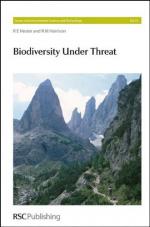|
This section contains 2,800 words (approx. 10 pages at 300 words per page) |

|
Biodiversity exists at three interrelated levels: species diversity, genetic diversity, and community-level diversity. When we talk about plant biodiversity, we refer to the full range of plant species, the genetic variation found within those species, and the biological communities formed by those species. For vascular plants, biodiversity includes all species of ferns, gymnosperms, flowering plants, and related smaller groups such as clubmosses and horsetails. The genetic variation found within populations and among populations arises through the mutation of individual genes or chromosomes and is rearranged by genetic recombination during the sexual process. Genetic variation is important not only for the survival and evolution of species; it is also important to people for breeding improved crop plants with higher yields.
Biological diversity also refers to all biological communities, including temperate forests, tropical forests, grasslands, shrub lands, deserts, freshwater wetlands, and marine habitats. Each of these biological communities represents an...
|
This section contains 2,800 words (approx. 10 pages at 300 words per page) |

|


